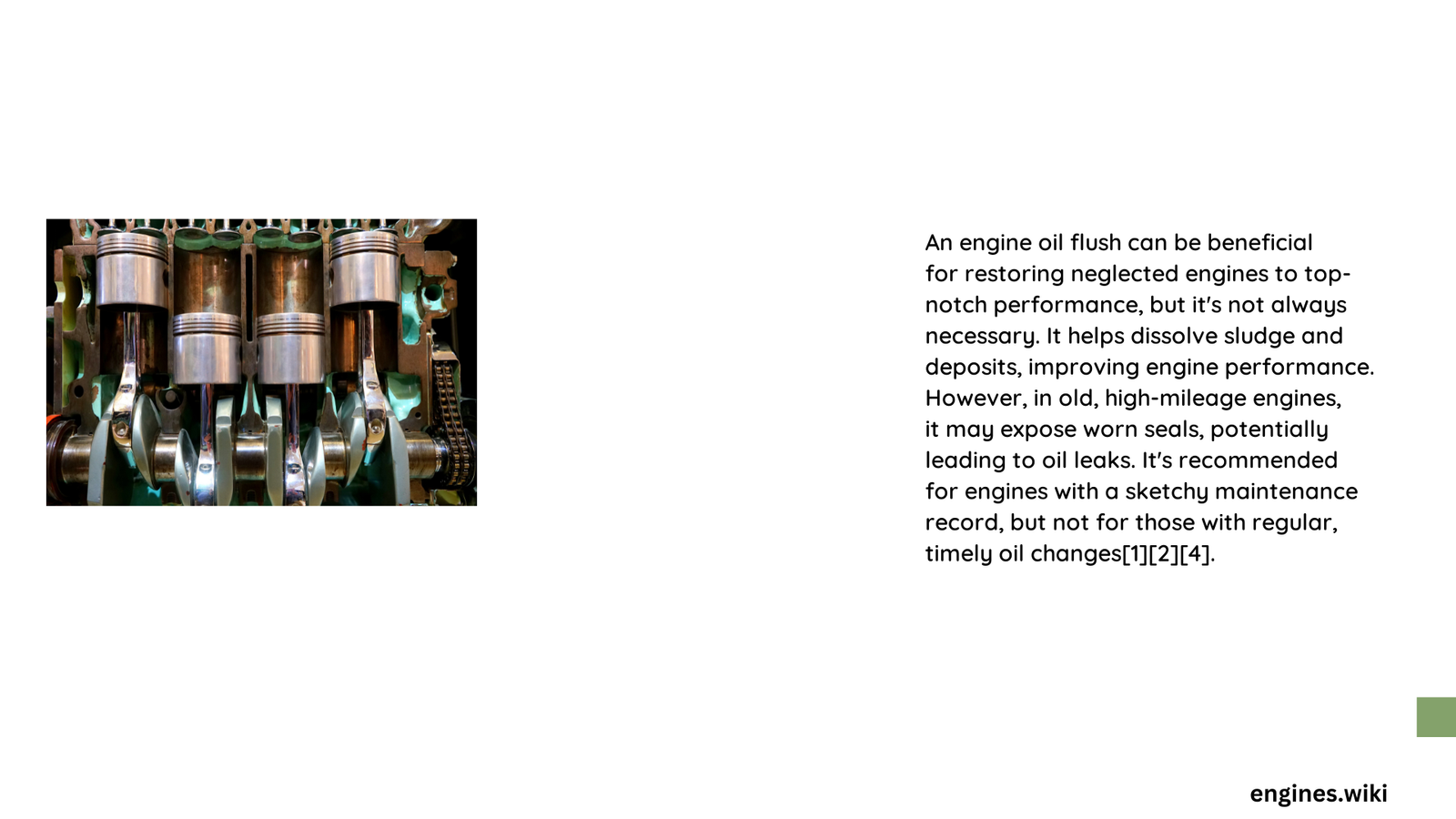Engine oil flush can be a double-edged sword for vehicle maintenance. While it promises to remove harmful sludge and deposits from your engine, it also carries potential risks of damaging critical engine components. Vehicle owners with high-mileage engines must carefully evaluate their specific situation, considering factors like engine condition, maintenance history, and potential long-term consequences before deciding to perform an oil flush.\n\n## What Exactly is an Engine Oil Flush?\n\nAn engine oil flush is a chemical process designed to clean internal engine components by dissolving and removing accumulated sludge, carbon deposits, and other contaminants that build up over time. This procedure involves adding a specialized cleaning solution to the engine oil, which helps break down and remove these harmful deposits before changing the oil.\n\n## Why Would You Consider an Engine Oil Flush?\n\n### Potential Benefits of Oil Flush\n\n1. Sludge Removal
– Dissolves accumulated engine deposits
– Improves overall oil circulation
– Potentially reduces internal engine friction\n\n2. Performance Enhancement
– Can help restore engine efficiency
– Might improve oil flow in older engines\n\n### Risks Associated with Engine Oil Flush\n\n| Risk Category | Potential Consequences | Likelihood |\n|————–|————————|————|\n| Seal Damage | Oil leaks | Medium |\n| Clogged Pathways | Reduced lubrication | High |\n| Hidden Mechanical Issues | Masked underlying problems | Low |\n\n## When Should You Avoid an Engine Oil Flush?\n\n- Vehicles with less than 75,000 miles\n- Engines with known seal or gasket vulnerabilities\n- Vehicles with recent comprehensive maintenance\n- If you lack professional mechanical guidance\n\n## Professional Recommendations for Safe Oil Flush\n\n### Preparation Steps\n\n1. Choose a high-quality, manufacturer-recommended flush product\n2. Warm the engine before application\n3. Follow precise manufacturer instructions\n4. Use professional-grade tools\n\n### Post-Flush Maintenance\n\n- Immediately change oil filter\n- Use high-quality replacement oil\n- Monitor engine performance closely\n- Consider professional inspection\n\n## Expert Insights on Engine Oil Flush\n\nMost automotive experts recommend caution when considering an engine oil flush. While it can provide benefits for high-mileage vehicles, the potential risks often outweigh the advantages. Professional mechanics suggest alternative maintenance strategies that are less invasive and more predictable.\n\n## Alternatives to Engine Oil Flush\n\n- Regular oil changes\n- High-quality synthetic oils\n- Consistent vehicle maintenance\n- Professional engine diagnostics\n\n## Cost-Benefit Analysis\n\nThe average cost of an engine oil flush ranges from $50 to $150. When compared to potential engine repair costs ($1,500 – $4,000), the risk becomes more apparent. Always consult a professional mechanic who can assess your specific vehicle’s condition.\n\n## Final Verdict: Is Engine Oil Flush a Good Idea?\n\nFor most vehicles, an engine oil flush is not recommended. Instead, focus on:\n- Regular, high-quality oil changes\n- Using manufacturer-recommended oil\n- Maintaining consistent service intervals\n- Addressing specific engine issues promptly\n\nReference:\n- AMSOIL Engine Maintenance Guide\n- Automotive Maintenance Experts\n- Professional Mechanic Insights

